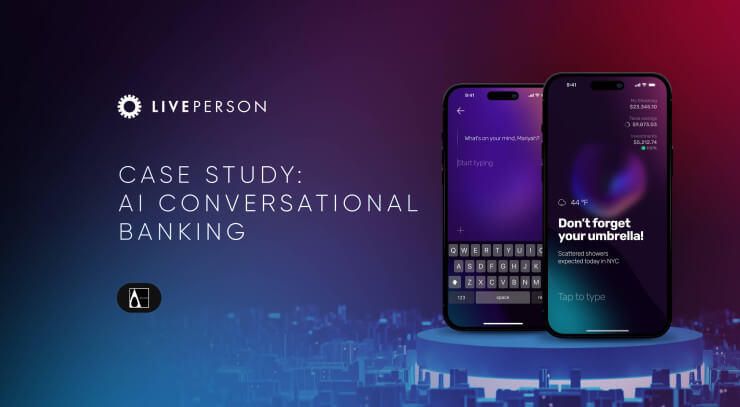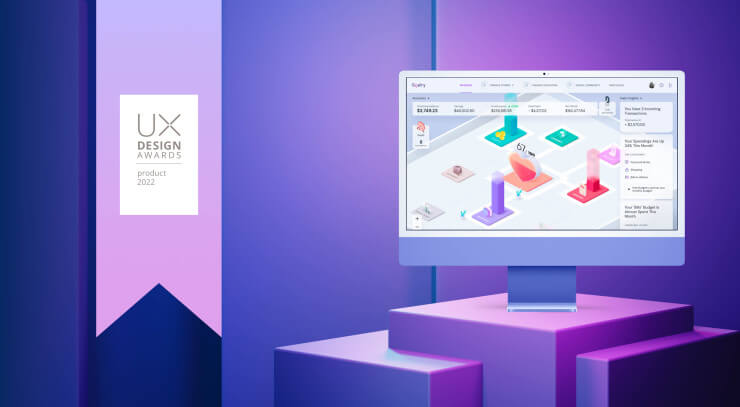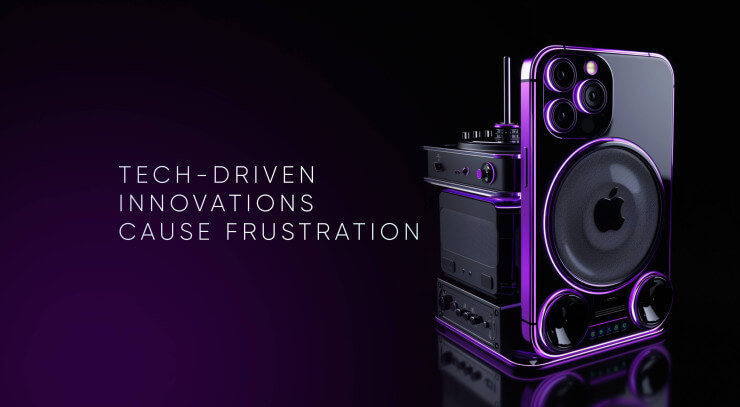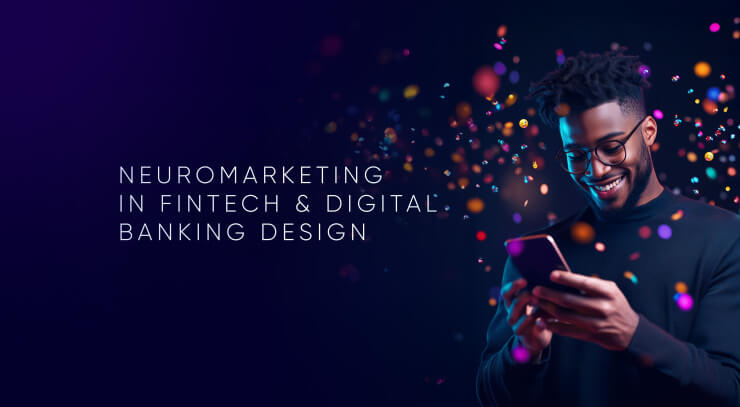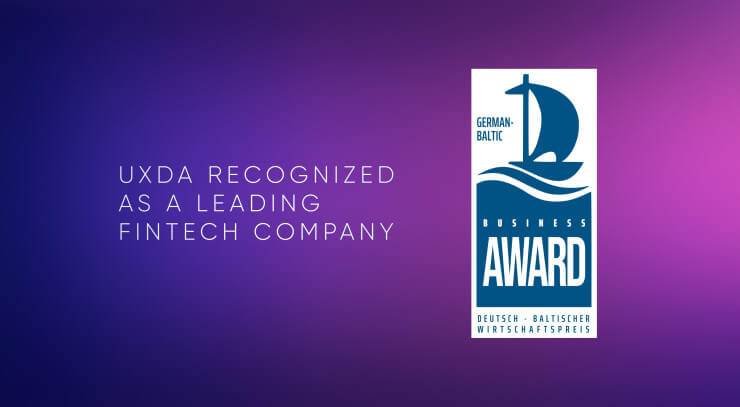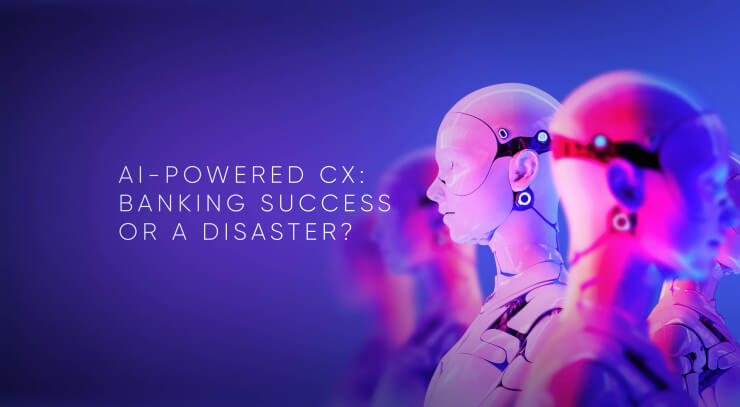Modern financial products need more than functionality—they need emotional appeal and user engagement. This principle is especially crucial in financial services. Successful financial apps like Revolut and Cash App thrive by creating charming customer experiences (CX) in banking that go beyond basic functionality. In this article, we will look at how "sex" could provide inspiration and insight into the design of a financial product to make it attractive to users, and ultimately a market leader.
In the 90s, a company was on the brink of bankruptcy. Its founder gathered the managers and asked, "Do you know what the problem is?" When no one could offer a clear answer, he declared, "The products suck! There's no sex in them anymore." From that moment, they obsessively improved their offerings, eventually taking over the world and becoming the richest company on the planet. Yes, you guessed it—this is the story of Steve Jobs and Apple.
Now, you might argue, "But that was Steve Jobs with innovative gadgets—financial products are different; they’re just boring balance and transaction numbers." Think again. Just look at apps like Revolut, Cash App and Nubank. They are genuinely "sexy", and today, they boast as many clients as the top three U.S. banks: Chase, Bank of America and Wells Fargo. There’s more in common between sex and banking than you might think, and today we’ll explore how to use "sex appeal" to create a killer financial product.
The Surprising Parallels: Banking and Sex
In Fintech and banking, where trust, security and reliability are paramount, adding sex appeal to products might seem counterintuitive, even inappropriate. But in mentioning "sex," Jobs wasn’t talking about intimacy or superficial aesthetics. Rather, he was talking about creating products that evoke emotion, passion and a deep connection with users. He meant designing products that people love, not just tolerate. Adding "sex appeal" means injecting innovation, excitement and a seamless customer experience into banking and financial products that have historically been seen as utilitarian and, frankly, boring.
For a decade the UXDA team has been focused on humanizing financial services and has designed a user experience for over 150 digital financial products in 37 countries. And according to our observations about the development of the banking CX and financial technology from the customer's point of view, the significance of these switches could be compared to the well-known sexual revolution.
Sex: from utilitarian to emotional
During the medieval period, particularly in Europe, the influence of Christianity led to a more restrictive view of sex, often emphasizing its utilitarian function for procreation within marriage and associating it with sin and shame. The Renaissance brought a renewed interest in humanism. Art, literature and philosophy during this period began to reflect a more nuanced view of sex, acknowledging its emotional dimension.
The 18th-century Enlightenment further shifted attitudes toward sex. Thinkers like Voltaire and Rousseau began to challenge traditional views and advocate for personal freedom, including sexual expression. In the 19th century, despite the Victorian era's reputation for sexual repression, undercurrents of change began to emerge. The rise of romantic literature emphasized the emotional aspects of love and sex, and movements for women's rights began to challenge traditional sexual norms.
The 20th century brought us the Freudian Revolution, with theories on sexuality and the unconscious, causing a significant shift in understanding human sexuality as a fundamental part of human identity and emotional life. The western sexual revolution of the 1960s-1970s marked a profound change in attitudes toward sex, driven by factors such as the development of birth control, the feminist movement and greater openness in discussing sexual issues.
Banking: from transactional to experience-driven
The shift in attitudes toward sex from a utilitarian and shame-based perspective to one that emphasizes emotional connection and pleasure can be compared to the contemporary transformation in the banking sector, which moves from a purely functional and transactional approach to a digital one that could be increasingly emotional and experience-driven.
For centuries, banking was primarily about providing essential financial services like deposits, withdrawals, loans and savings. The interaction between banks and customers was mainly transactional, focusing on the functional aspects of managing money.
You probably think there is nothing more boring than designing banking apps. But think again. Digital technology has started placing a significant emphasis on creating a positive and engaging customer experience in banking. The banking sector has seen a rise in innovative digital services, such as mobile banking, online financial management tools, AI services and next-gen apps, designed to enhance the user experience and make banking more accessible and enjoyable for everyone.
Some financial digital product experiences with the most "sex appeal" in the industry can be explored in our portfolio.
Emotional shifts
These transformations in both sex and banking reflect broader societal changes toward valuing personal fulfillment, emotional engagement and positive experiences. They underscore a shift from purely functional and utilitarian perspectives to ones that prioritize human connection, satisfaction and individual needs:
1. Personalization and individual needs:
Sex: The modern view emphasizes the importance of individual sexual preferences, emotional needs and personal satisfaction.
Digital Banking: There is a focus on understanding and catering to individual financial needs, preferences and goals.
2. Openness and transparency:
Sex: Society has become more open about discussing and addressing sexual health, rights and education.
Digital Banking: There is greater transparency in financial services, with banks and Fintechs providing clear information and fostering open communication with customers.
3. Enhanced experience:
Sex: The shift toward viewing sex as a source of emotional connection and pleasure has enhanced the overall experience of intimacy.
Digital Banking: The focus on creating an enjoyable and seamless digital experience has transformed how people interact with financial institutions.
4. Technology and innovation:
Sex: Advances in sexual health technology, such as contraceptives and sexual health education, have supported the shift toward a more positive and fear-free view of sex.
Digital Banking: Digital innovations like mobile apps, online banking and AI-driven customer service are revolutionizing the banking CX.
Both sex and finance are intensely personal experiences, steeped in a mix of anticipation, excitement, fear and satisfaction. These emotions are not just peripheral; they are central to the human experiences themselves.
For instance, the anticipation of an intimate encounter can be compared with the excitement of receiving a paycheck or a money transfer. Similarly, anxiety about performance in sex can be compared to the nerves one might feel when applying for a loan or investing in stocks. Just as a fulfilling sexual experience leaves a lasting positive impression, a smooth financial transaction, a notification of received income or a successful investment can also provide deep satisfaction.
Outstanding Benefits of "Sexy" Financial Products
A "sexy" digital financial product offers outstanding benefits to banks and financial service companies. After spending a decade designing hundreds of financial products, the UXDA team is convinced that creating a product that is not only functional but also engaging, appealing and emotionally resonant can deliver significant rewards for financial institutions.
A "sexy" digital financial product can revolutionize the relationship between banks and their customers. It boosts customer satisfaction, loyalty and engagement—all of which contribute directly to the bottom line. Moreover, it positions the bank as an innovative leader in the market, opening up new avenues for growth and success.
In an industry often perceived as dry and utilitarian, adding a touch of "sexiness" can be a game changer. A "sexy" digital financial product goes beyond aesthetics and functionality to create a holistic, engaging and innovative banking CX that benefits both the user and the financial institution.
By achieving high app ratings, simplifying digital adoption and earning industry recognition, a "sexy" product, similar to Apple's, doesn’t just meet market demands; it sets new standards for excellence in the financial industry. This could ultimately position the bank or financial service as a leader in digital innovation, driving long-term growth and success.
Here are some of the key benefits:
- Increased Customer Loyalty and Retention. A "sexy" digital product fosters a deep connection with users, making them more likely to stick with the service long term. When customers find a product that they enjoy using and that meets their needs in an appealing way, they are less likely to switch to a competitor. This loyalty can lead to higher lifetime value from each customer.
- Enhanced Brand Perception. Offering a "sexy" digital product can significantly improve the brand perception of a bank or financial service. It positions the company as innovative, customer-focused and forward thinking. This can differentiate the brand in a crowded market, attracting more customers who are looking for a modern and engaging financial and banking CX.
- Higher Customer Engagement. A product that is delightful and easy to use naturally encourages more frequent interaction. Increased engagement means customers are more likely to explore additional features, use the product more regularly and even consider other services offered by the company. This can lead to increased usage and potentially more revenue through cross-selling and upselling opportunities.
- Improved Customer Acquisition. A "sexy" digital product is more likely to generate buzz and word-of-mouth referrals. Satisfied customers are more inclined to recommend the product to friends and family, which can lead to organic growth. Additionally, a product that stands out in the market can attract new customers who are seeking an innovative and enjoyable banking CX.
- Reduced Customer Support Costs. When a digital product is intuitive, user-friendly and designed to delight, it often results in fewer customer service issues. Users can navigate the product easily, reducing the need for them to contact support for help. This not only cuts down on support costs but also improves overall customer satisfaction.
- Increased Market Share. By offering a product that resonates emotionally with users and meets their needs in a stylish and effective way, banks and financial services can capture a larger share of the market. This is particularly important in appealing to younger, tech-savvy customers who expect their financial products to be as polished and intuitive as the other digital services they use.
- Stronger Competitive Advantage. A "sexy" digital product can provide a significant competitive advantage, especially in a market in which many products are seen as similar or interchangeable. By standing out with a product that excites and delights users, banks and financial services can differentiate themselves and gain an edge over their competitors.
- Better Data Collection and Insights. Higher customer engagement with a "sexy" product translates into increased interactions and more data. This data can be invaluable for understanding customer behavior, preferences and needs. With clearer insights, banks can fine-tune their offerings, personalize banking CX even further and make more informed business decisions.
- Increased Revenue Opportunities. When customers are more engaged and loyal, they are more likely to explore premium features or products. A "sexy" digital product can open up opportunities for monetization through value-added services, subscriptions or partnerships, thereby driving additional revenue streams.
- Positive Impact on Company Culture. Internally, developing and offering a "sexy" digital product can inspire pride and motivation among employees. It fosters a culture of innovation and customer-centricity, encouraging teams to think creatively and push the boundaries of what’s possible in financial services.
- Faster Adoption of New Technologies. A product that is designed to be "sexy" often incorporates the latest in design trends, banking CX and technology. This not only keeps the company at the forefront of innovation but also makes it easier to adopt new technologies in the future, as the company and its customers become more accustomed to a rapid pace of change.
- Better Regulatory Compliance. While it may seem counterintuitive, a well-designed and intuitive product can also help with regulatory compliance. By guiding users through complex processes in a simple and understandable way, the product can help ensure that users comply with necessary regulations, reducing the risk for both the bank and the customer.
- Increased App Ratings and Positive Feedback. A "sexy" digital product typically leads to higher customer satisfaction, which directly translates into better app ratings and more positive feedback in app stores and online reviews. High ratings and glowing reviews can significantly enhance the product's visibility in app marketplaces, attract new users and build trust with potential customers who rely on peer feedback before choosing a financial service. Positive feedback also serves as a form of validation that the product is meeting user needs in a compelling way.
- Fostering a Digital Culture that Simplifies Adoption. A "sexy" digital financial product helps to foster a digital culture within the bank or financial institution that prioritizes simplicity, innovation and customer experience. This culture makes it easier for both employees and customers to adopt new digital tools and processes, as the focus is on making technology intuitive and accessible. Simplified digital adoption reduces resistance to change, encourages continuous learning and ensures that new digital solutions are embraced more quickly and effectively across the organization.
- Industry Recognition and Awards. Creating a standout, "sexy" digital product can lead to significant recognition within the industry. Innovative and user-friendly financial products often catch the eye of industry experts and award bodies. Winning prestigious awards or being recognized in industry reports can greatly enhance the company’s reputation, leading to increased trust from customers, partners and investors. This recognition not only serves as a marketing tool but also boosts employee morale and validates the company’s efforts in pushing the boundaries of digital finance.
Designing for Emotional Engagement
Just as Jobs reignited passion for Apple by adding "sex" to its products, Fintech and banking products can be transformed from mundane to extraordinary by focusing on the banking CX, emotional connections and seamless design.
At the heart of every financial transaction is a human being—and humans crave experiences that are not just functional but also delightful, engaging and, yes, even a little "sexy". By applying these principles, we can create digital products that people not only use but love:
1. Humanize the Experience
Fintech products often feel cold and impersonal. To add "sex", you need to humanize the experience. This means designing interfaces and interactions that make users feel understood and valued. Use language that resonates with your audience, employ visuals that connect emotionally and ensure every touchpoint feels personalized. Think of how Apple's devices seem to understand their users' needs almost intuitively—that’s the level of empathy your Fintech product should strive for.
Example: Instead of a standard, robotic notification about a low account balance, craft a message that feels like it’s coming from a friend. "Hey, just a heads-up, your balance is getting a little low. Want to move some money around or set up a reminder?"
2. Design for Delight
Delight in Fintech? Absolutely! Adding small moments of joy can turn a mundane task into something users look forward to. Whether it’s through micro-interactions, playful animations or unexpected rewards, these elements make your product memorable.
Example: When a user successfully completes a financial goal or milestone, celebrate it with a small animation or a personalized message. It’s like the confetti that rains down in fitness apps when you hit your step goal—it’s simple but makes you feel good.
3. Simplify Complexity
One of the reasons traditional banking products often lack "sex appeal" is because they are overly complex. Simplifying these processes and making them intuitive can drastically change how users perceive and interact with your product. Remember, simplicity is the ultimate sophistication.
Example: Consider the process of applying for a loan. Traditionally, this is a long, tedious process filled with jargon and complex forms. By breaking it down into simple, understandable steps and using plain language, you can make this experience more accessible and engaging.
4. Create a Strong Visual Identity
A strong, cohesive visual identity is critical in adding "sex" to Fintech and banking products. This goes beyond just looking good. It’s about creating a visual experience that aligns with your brand’s values and resonates with your target audience. Consistent colors, typography and design elements across all platforms help build trust and recognition.
Example: Look at how Apple’s visual design is instantly recognizable—from the clean lines to the minimalist approach, every element is crafted to reflect the brand’s ethos. In Fintech, creating a similarly strong visual identity can make your product stand out in a crowded market.
5. Build Emotional Connections
Money is inherently emotional—it’s tied to our dreams, anxieties and self-worth. To add "sex" to Fintech and banking products, simply tap into these emotions. Craft experiences that acknowledge these feelings and help users navigate them with confidence.
Example: A savings app that doesn’t just track progress but also sends encouraging messages like, "You’re doing great! Just $100 more to hit your savings goal!" Or one that offers advice when users are falling behind.
6. Leverage Storytelling
Storytelling is a powerful tool to make your product more relatable and engaging. It’s not just about narrating the features but about showing how your product fits into the user’s life, helping them achieve their goals.
Example: Use real-life scenarios or customer success stories in your marketing and onboarding processes. This approach can help potential users see themselves in the narrative, making your product more attractive.
7. Incorporate Elements of Play
Gamification has proven to be an effective way to engage users across various industries, and Fintech is no exception. By adding elements of play, you can transform mundane financial tasks into something more enjoyable.
Example: Implement a rewards system for completing certain actions, like saving money or paying off debt. These rewards could be points, badges or even tangible benefits like lower fees or interest rates.
8. Ensure Seamless Integration Across Devices
In today’s world, users expect their products to work seamlessly across all their devices. A banking app that works well on a desktop but poorly on a mobile device is a surefire way to frustrate users. To add "sex", ensure that your product offers a consistent, high-quality banking CX no matter where it’s accessed.
Example: Develop a responsive design that adapts beautifully to any screen size, and ensure that all features are fully functional on both mobile and desktop versions.
9. Focus on Speed and Efficiency
Nothing kills user engagement faster than a slow, clunky interface. In Fintech, where users often need to make quick decisions, speed is critical. Streamline your processes, optimize load times and ensure that every action is quick and responsive.
Example: Instant account setup, real-time notifications and one-click transactions can make your product feel more dynamic and modern.
10. Gather and Act on Feedback Continuously
Finally, to keep "sex appeal" in your Fintech product, you must be in tune with your users' evolving needs and desires. Continuous feedback loops allow you to identify areas for improvement and innovation.
Example: Regularly survey your users, use A/B testing to determine what features or designs resonate best, and be prepared to iterate quickly based on the insights you gather.
Conclusion: "Sexy" Design for Deep Emotional Engagement
Financial experiences are rich with emotional undertones for the user. Recognizing and designing for these emotions transforms mundane transactions into pleasant user journeys. By acknowledging and addressing the human side of finance, we can use Steve Jobs' approach to create "sexy" digital services that are not only efficient but also profoundly satisfying.
A "sexy" digital financial product refers to a financial service or application that is not only functional but also highly appealing, engaging and fun to use. The term "sexy" in this context is about creating a product that excites users, elicits positive emotions and helps them build a strong connection to the product.
A "sexy" financial product is one that users can navigate with ease. It has an intuitive interface where everything is where it’s expected to be, reducing friction and making complex financial tasks feel simple and manageable. The visual design is sleek, modern and polished. Every element—from typography to color schemes and iconography—is carefully chosen to create a cohesive and attractive look. Aesthetics are not just about being beautiful; they contribute to a sense of trustworthiness and professionalism.
A "sexy" financial product feels tailor-made for the user. It offers personalized banking CX, such as customized dashboards, insights based on user behavior or tailored advice. This makes the product feel relevant and enhances user engagement. A "sexy" digital financial product goes beyond functionality to create an emotional bond with its users. This could be achieved through storytelling, empathetic messaging or by helping users achieve their financial goals in a way that feels supportive and empowering.
Apple’s products often push the envelope with innovative features that solve problems in new, "sexy" and exciting ways. So, whether it will be a new way to visualize spending habits, an AI-driven financial advisor or a seamless multi-device experience, innovation should bringallure to the financial product.
"Sexy" financial products are fast and efficient. Users can complete tasks quickly, without unnecessary delays or complications. The product respects the user’s time, providing a seamless experience from start to finish.
While "sexy" implies excitement and appeal, in finance, it also encompasses trustworthiness. Users need to feel secure using the product, knowing their data is safe and that the company is transparent and reliable. A "sexy" product marries excitement with a solid foundation of trust and security.
A "sexy" financial product is something users want to talk about and share with others. It might include features that make it easy to share progress, invite friends or even boast about financial achievements, adding a social element to the experience.
Ultimately, a "sexy" financial product helps users achieve their financial goals in a way that feels smooth, exciting and rewarding. Whether it's saving for a big purchase, paying off debt or investing wisely, the product guides users along their financial journey with confidence and flair.
In essence, a "sexy" digital financial product is one that transforms the often tedious and complex world of finance into something approachable, engaging and even exciting. It's about combining usability with aesthetics, personalization, emotional resonance and trust, creating a product that users love and feel compelled to use regularly. Let's bring more positive emotions to finance!
Get UXDA Research-Based White Paper "How to Win the Hearts of Digital Customers":
If you're ready to elevate your financial offerings and gain a significant competitive edge in the digital landscape, let’s connect! By harnessing the strategic power of financial UX design, we can transform your business into a trusted, emotionally resonant brand that not only stands out but drives demand, success, and lasting customer loyalty.
- E-mail us at info@theuxda.com
- Chat with us in Whatsapp
- Send a direct message to UXDA's CEO Alex Kreger on Linkedin








